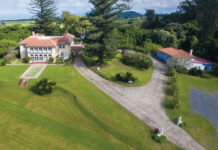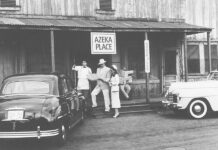Story by Rita Goldman | Photography by Sue Hudelson
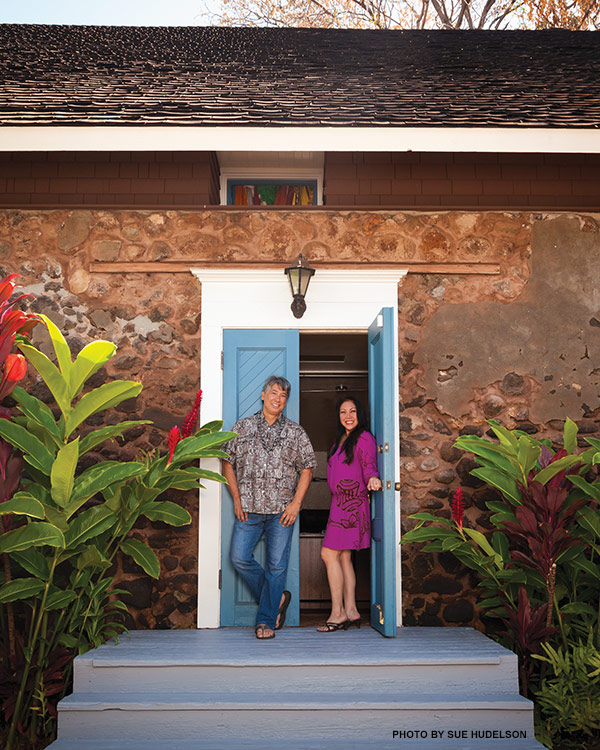
Wall Street will tell you that the way to gauge a successful company is to look at its bottom line. Here on Maui, there’s a company whose success you can measure by the way it treats people: not just its customers, but also its employees, suppliers, and the community it has called home for nearly thirty years. Happily, its bottom line is doing fine, too; the island would be a poorer place without it.
The company is Na Hoaloha ‘Ekolu (Hawaiian for “three friends”), the restaurant group that owns and operates Old Lahaina Lu‘au, Aloha Mixed Plate, Star Noodle, and Leoda’s Kitchen and Pie Shop. Since MNKO readers have bestowed more than four-dozen ‘Aipono Awards on these venues, our annual food issue seemed a good time to find out what makes Hoaloha restaurants such hot properties.
But when I sit down to talk with Michael Moore, one of the company’s owners, he hands me a copy of A Lapsed Anarchist’s Approach to Building a Great Business. The book is by Ari Weinzweig, cofounder of Zingerman’s Deli in Ann Arbor. This leads to an obvious question: What does a Jewish delicatessen in the Midwest have to do with a Maui company predicated on local foods and island culture?
A lot. Both companies began in the 1980s, launched by restaurant folks who were short on capital, long on solid (if unconventional) work ethics. When offered opportunities to expand geographically, both companies chose instead to develop related businesses and keep them in their home communities. To the deli, Zingerman’s added a bakery, a creamery, a coffee company, a catering service, and a dinner restaurant. Zingerman’s also invested heavily in its staff, creating a training division for managers and employees. (Today, business people from all over the world travel to Ann Arbor to attend ZingTrain seminars.) And Zingerman’s made a commitment to give back to community, establishing a food-rescue program that collects and delivers food to people in need.
If Zingerman’s Deli was founded on a great pastrami on rye, Na Hoaloha ‘Ekolu grew out of the desire for a true Hawaiian lu‘au on Maui. Michael Moore and Robert Aguiar had developed the Old Lahaina Lu‘au for an ocean-recreation company, with dinners and performances held on a leased beachfront lawn at 505 Front Street. When the owner decided to liquidate that onshore venture, Robert and Michael recruited Tim Moore (no relation), scraped together their savings, and purchased the lu‘au.
It was 1986. The partners had neither liquor license nor commercial kitchen, and they lacked the built-in customer base of a lu‘au located on hotel grounds. They kept their day jobs and operated the lu‘au three nights a week, serving about 100 guests per night. A local family catered, and diners brought their own booze.
What the lu‘au lacked in facilities and funding, it made up for in authentic Hawaiian food and entertainment. Attendance doubled, and the partners took another leap of faith and bought the restaurant next door. With a commercial kitchen and liquor license, they were soon serving nearly 300 guests a night, seven nights a week. During the day, the restaurant, the Old Lahaina Café, served up local-style breakfasts, lunches and dinners.
In 1998, Old Lahaina Lu‘au moved to a site near Mala Wharf, in a location almost four times larger than the original grounds. The lu‘au has run at capacity ever since.
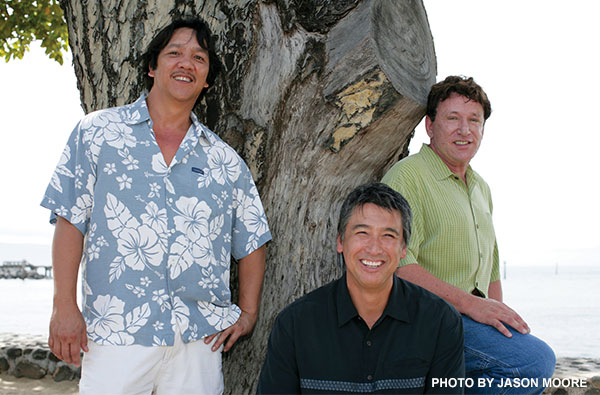
Hoaloha’s success wasn’t all a smooth a ride. “Tim and I used to fret about leadership,” says Michael. “We’d done lots of leadership training. We closed the whole company for a day, when we were still at 505, so that all 100 or so of us could do training. The guy who comes, he’s never run a restaurant, never been to Hawai‘i. He started with a comparison to the breakup of the Soviet Union. Our people were so turned off, a third of them didn’t come back after the break. It’s not that what he had to say wasn’t good, but it wasn’t relevant to us.”
Their “aha” moment came as a side to a Reuben sandwich.
“We had used Zingerman’s mail-order business in the past,” says Michael. “We’d send their ‘Reuben in a Box’ as a gift, something we can’t do from Hawai‘i. Scrolling through their website, we noticed their classes in leadership and management training. The bells started going off: Here was a business that did what we did, that knew about busboys and waiters and cooks, and they were trainers. Ten days later, Tim and I were in Ann Arbor.
“We do exit interviews with everyone who leaves the company; it’s the most helpful information you may get. Our training and evaluation kept being rated the lowest, and it was frustrating. We were saying that training was leadership’s job, but we weren’t making sure it was getting done.”
A solution straight out of Zingerman’s was the training “passport.” Given to every new employee, this little booklet spells out the company’s expectations in specific detail. (How specific? Lei greeters at the lu‘au learn to look each guest in the eye, say aloha and use two hands to place the lei over the guest’s head.) As importantly, the passport specifies what the trainer agrees to do.
“If you’re a new employee and I am your manager, we both sign the passport,” says Michael. “I agree to provide all the tools and information you need, and to be committed to your success. You are responsible for making sure you get all the training. For the trainer, it means a lot of upfront work, figuring out everything the employee needs to know before they start. It’s counterintuitive to the way most restaurants work. They’ll say, ‘Go follow Joe for three days and watch what he does.’ There’s no way of knowing that you’ve learned everything.”
Having the details in writing lets employees know what they still needs to learn — and empowers them to go to the trainer and get it. At least, that’s the goal. “We’re not perfect,” Michael admits. “We screw up all the time.”
And not every Zingerman’s concept fits Hoaloha. “We sent a team to Ann Arbor to study meetings,” says Michael. “You can’t believe how much they got done. We tried [their methods], but it’s not our culture to keep a timer and cut people off when their turn is up.”
Beyond Lu‘au
In 1996, Hoaloha launched a new restaurant whose menu mirrors the evolution of the Islands. While Old Lahaina Lu‘au honors Hawaiian culture, Aloha Mixed Plate celebrates the cuisines of the polyglot of people who followed — Chinese, Japanese, Portuguese, Filipino, Korean — immigrants who came to labor on Hawai‘i’s plantations and created a new multicultural society.
The next Hoaloha addition came fourteen years later: a trendy little Asian eatery tucked away in a light-industrial park up the hill from Lahaina Gateway Center. Tim Moore explains:
“Shortly after we moved the lu‘au to its new location, we had the opportunity to buy property in Lahaina Business Park for a warehouse and a production kitchen. That was the main project, but if you’re going to build a 3,500-square-foot kitchen, it doesn’t make sense not to have a commercial outlet there.
“We were going to New York a lot, eating noodles at David Chang’s Momofuku, and Ippudo. It seemed strange that we’d be seeking out something so local in New York, rather than at home. There are some great little noodle shops on Maui, but nobody was doing what Chang was doing, taking noodles and making them sophisticated. We decided there was room for a noodle shop like that on Maui.
“People told us the business park was a terrible location, but we said that would be part of our identity. We could be a secret club that locals know about, and then visitors would find us, because they’d want to go where the locals go. And that’s how it happened. After the first six months, everything got crazy and fun.”
Star Noodle opened in 2010, and in 2011 scooped up the Gold ‘Aipono Award as Best New Restaurant. To ease the happy problem of having more customers than the space could handle, the partners recently introduced Starstruck, a food truck permanently parked in Star Noodle’s lot, where patrons can get carryout orders or nibble on appetizer-sized menu items while they wait to be seated inside.
The Answer Is Pie
When longtime French restaurant Chez Paul closed in Olowalu, Hoaloha’s partners acquired the space, and thought about what to put in that blink-and-you’ve-passed-it spot on the way to Lahaina.
“The biggest challenge was to find something that would feel like it belongs in Olowalu,” says Michael. “Rob [Aguiar] spent a lot of time there when he was a kid. He said the new restaurant needed to be a little old-fashioned.
“We thought about the kinds of people who came through Olowalu, snorkelers on their way to the ocean, people going on excursions around the island, and asked ourselves what they’d need. What made sense was sandwiches. We also knew that pies were becoming the next big thing. We decided to do small pies that you could carry in your hand. We named the place Leoda’s Kitchen and Pie Shop after Rob’s mother, Leoda.”
Today, the Hoaloha ‘ohana (family) includes a bakeshop that prepares breads and pastries for the company’s restaurants; a farm that grows taro for the lu‘au, for taro chips sold at Leoda’s, and for bags of poi made available inexpensively to seniors in the community; and the Charles Ku‘upu Learning Center, located in Hale Aloha, a historic stone building in Lahaina.
The center honors the late cultural practitioner who helped Hoaloha establish its mission and build its business on Hawaiian values. Every employee, from busboy to hula dancer to mechanic to chef, participates in at least two training sessions here. One is an owners’ orientation hosted by the partners, who personally meet every new staff member, recount the company’s history and mission, and confirm that Hoaloha is not your “business as usual” kind of business. The other seminar is Ho‘okipa, Hawaiian for “hospitality.”
Immerse in Culture; Steep for Two Hours
At 10 a.m. on a Tuesday, a dozen Hoaloha employees climb the stairs of the learning center in T-shirts, caps, shorts and jeans. A dozen pairs of rubber slippers lie abandoned at the foot of the stairs. Clearly, everybody here is off duty, but they’re all being paid to attend.
Julie Yoneyama, director of employee relations, and Kawika Freitas, Old Lahaina Lu‘au’s general manager, conduct this two-hour exploration into Hawaiian history and culture. Kawika begins with some basic vocabulary: aloha, mahalo, mauka, makai . . . words that Hoaloha employees can translate to help visitors better understand and appreciate their Maui experience.
He tells the story of Haloa, mankind’s older brother, from whose grave the first taro plant grew. The plant is a staple of the traditional Hawaiian diet, and of any authentic lu‘au. To know that Hawaiians consider taro family is to gain respect for this food that it may be your job to grow, prepare or serve.
Later, Julie asks everyone to think of the company’s departments as ahupua‘a, the ancient Hawaiian land division that extended from the mountain to the sea. Within its borders lay everything needed to feed, clothe, and care for the community. The banana grower and the fisherman, the medical priest and the canoe maker, “no one person was more important than anyone else,” Julie says. “They were just in different positions.” Her analogy is obvious: “With every position comes responsibility. If you don’t like yours, you are in the wrong position. Our job is to find a place for you where you’ll be happy.”
Not everyone works out. “When I interview,” says Julie, “I look for people who want to work here, not just someone who wants a job. We’re a different type of company, with our own personality and a culture based on caring about each other. People from a corporate background have a hard time with that.”
“We’ve had people meet here, marry, have kids,” says Michael. “We have generations of families working for us. When someone recommends to their mother to come work with us, that’s chicken skin.”
Na Hoaloha ‘Ekolu Ohana
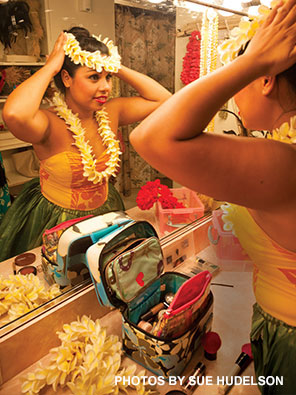 Brazlee Dutro Perez
Brazlee Dutro Perez
Last night, Brazlee Dutro Perez gave her final dance performance at Old Lahaina Lu‘au. Her smile today has the warmth of a mother-to-be. After the baby comes, she’ll take some other role at Na Hoaloha ‘Ekolu.
“I started here right out of high school,” she says. “My brothers worked at Old Lahaina Lū‘au. When I started, I felt like the coolest person! At Old Lahaina Lu‘au, you get to know the owners. You feel like family.”
“This job opened my eyes to what I am capable of doing,” she adds. “I want to be in management here.
“This company is about service. Once, at Aloha Mixed Plate, we were slammed, and Rob Aguiar helped me bus tables. I didn’t have to ask. He was in a tank top, and nobody knew he was an owner.”
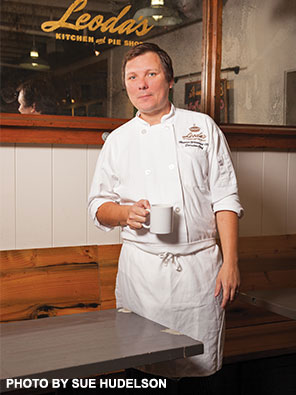 Marcus Whisenant
Marcus Whisenant
Marcus Whisenant had never been to Maui before he relocated last year from California, but he’d heard about Na Hoaloha. When his wife, Chelsea, was offered a job as sous chef for Hoaloha Bakeshop, Marcus agreed on the move. A month later, he was executive chef at Leoda’s Kitchen and Pie Shop.
The transition wasn’t entirely easy. “I’m classically trained,” he explains. “I was used to saying, ‘I’m the chef. I want it this way.’ Coming here meant taking a step back. I have learned a lot from my employees.
“One of the classes the company offers is servant leadership — leading by example. If I tell one of my guys, ‘Use a spoon to taste,’ and I use my finger, that doesn’t fly.
“I tried out for a job in California,” he adds. “The president of the company looks at me and says, ‘Can we make this quick?’ I had worked on the menu for so long, and I thought, ‘You want me to make it quick all the time? For the customers?’ I knew I didn’t want to work there.”
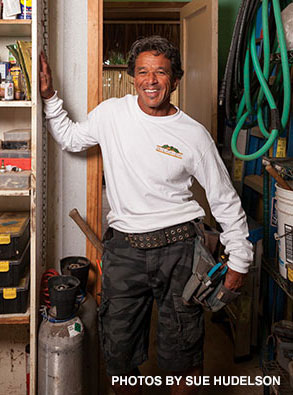 Dennis Blevins
Dennis Blevins
Dennis Blevins has known Hoaloha’s partners so long, he still thinks of them as “the boys.”
“I was doing construction back in the eighties, and ran into these guys who were remodeling the restaurant at 505 [Front Street]. They asked me to help.”
He did, later joining the company as head of projects for Hoaloha’s engineering department.
“I didn’t expect to be working here this long,” Dennis says, “but five years from now, I hope to still be here. You see generations come through at this company. You see everybody’s children grow up.
“The boys have come a long ways,” he adds. “They had nothing. They were workers. They’d work at the rental car company, then do the lu‘au at night. What I respect about them is that they haven’t changed.”




